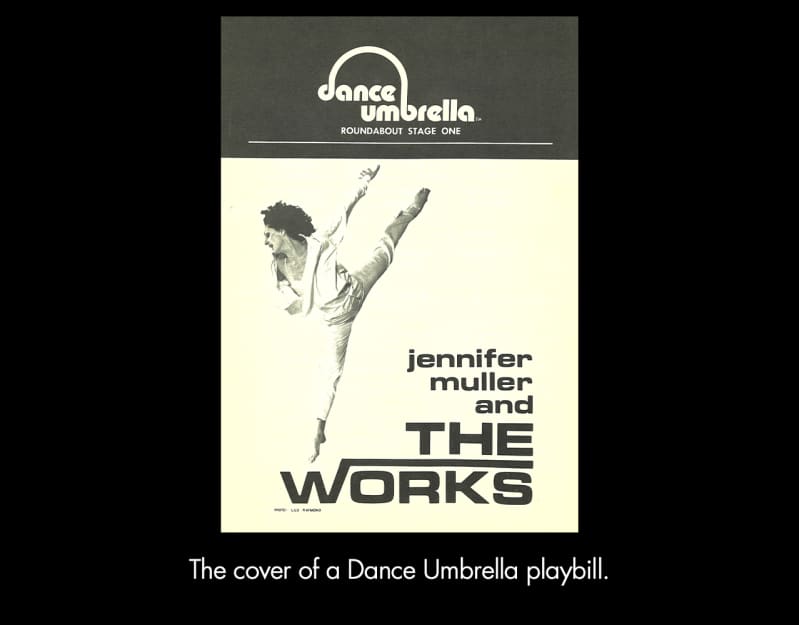In this edition of From the Archives, Tiffany Nixon, Roundabout's archivist writes about making sense of the often overlooked history of dance at Roundabout.
For most people who know something about Roundabout Theatre Company, dance programming probably does not come to mind. But in fact, in the mid-to-late 1970s, Roundabout was host to the Dance Umbrella, the brainchild of TAG (Technical Assistance Group), which consisted of stage manager Maxine Glorsky, lighting designer Beverly Emmons and stage and general manager Bill Hammond (who would go on to be Executive Director of the Alvin Ailey Company).
In the early years of working as Roundabout’s archivist, I would pour over the playbills to better understand the programming and chronology and was stumped when I started to see dance companies listed in the season line-up. Dance? At Roundabout? I began researching the acronym listed as the dance producer – TAG - and found that, at the time (this was 2009) there wasn’t a lot of information to be found on this group. So I reached out to its founders, Maxine and Beverly, to better understand how this partnership with Roundabout came about. I subsequently conducted oral history interviews with both artists and worked to ensure that their important performing arts archives were made available to the public for future reference and scholarship (both collections are now represented at Library of Congress and NYPL, Library for the Performing Arts).
While a relatively short period in Roundabout’s history, I believe it’s an important one as it reveals a “bandaged place” from Roundabout’s past, a time when the company had to think outside of the box to survive and did so through non-traditional programming. As the Dance Umbrella press release from 1975 explains, with the opening of Stage One Theatre (Roundabout’s second venue, opened in 1974), the company intended to use the space as “a multiple performing arts facility” and that the dance programming offered “a new dimension, identity and role as a New York cultural institution.” Roundabout subsequently offered a dance pass to its subscriber base, highlighting “New York’s most highly respected and innovative dance companies” as part of its 10-year anniversary (1975-1976) season. Both the press release and subscriber mailer are held in the Roundabout Archives.

An open newsletter; on the left page is a calendar made of black-outlined rectangles. On the right, black text on a white page. The word “subtext” appears at the top in thick, rounded type.
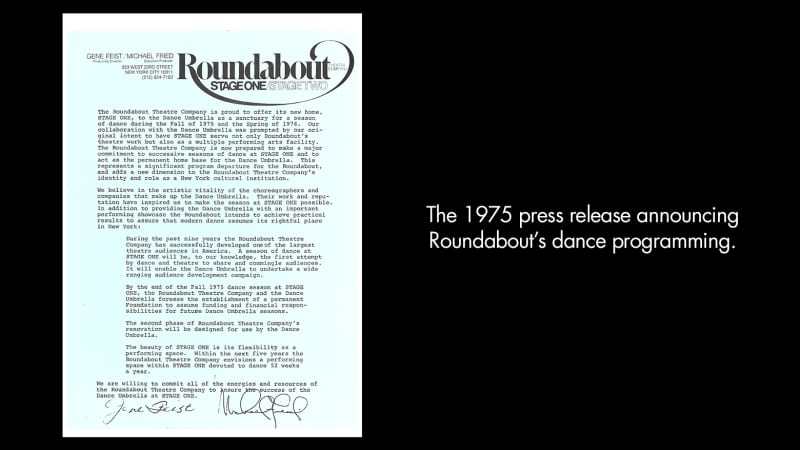
A blue sheet of paper with black typewritten text. Roundabout’s 1975 logo, which features a large, looping R, is in the top right corner. The bottom features two cursive signatures.
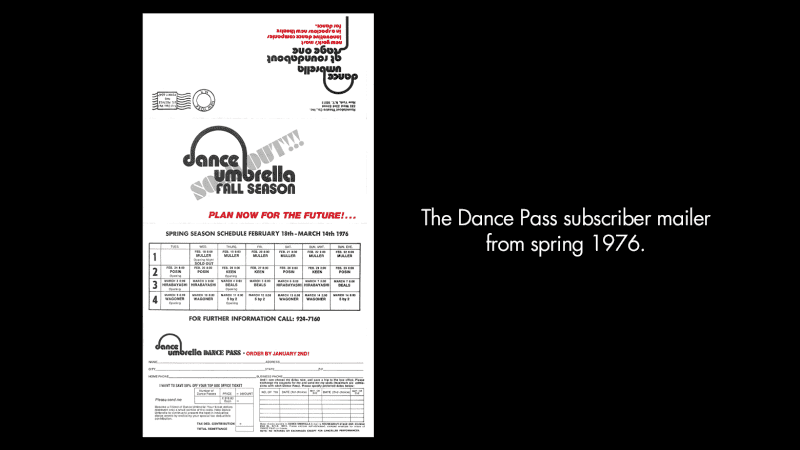
Black and red text on a white brochure.
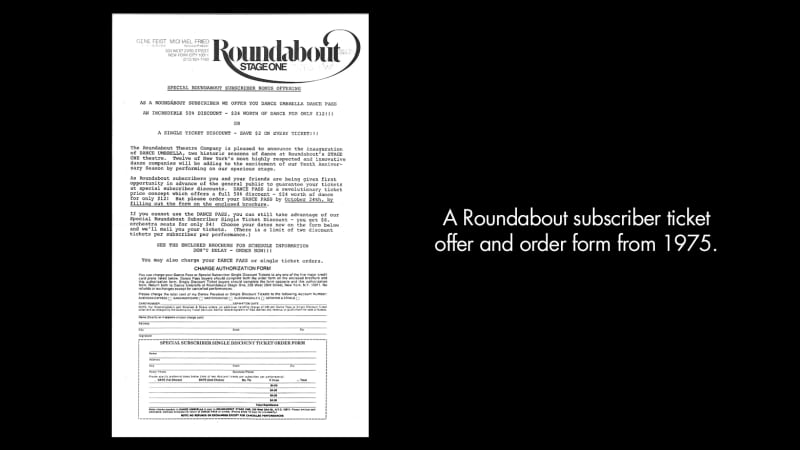
A white sheet of paper with black, typewritten text on it. Roundabout’s 1975 logo, which features a large, looping R, is in the top right corner. There is a box at the bottom set off by broken black lines.
For those who do know Roundabout’s long, nearly 60-year history, in the 1970s the company was facing dire financial problems and then-Artistic Director (and Roundabout’s founder) Gene Feist was exploring ways to keep the theatre afloat without exhausting our limited production capital. Enter TAG.
The members of TAG had begun to receive Mellon and NEA grants specifically to assist dance companies in their management (at that point, dedicated arts funding was only just beginning, and TAG was one of the early advocates of grants directed toward choreographers), including locating venues that might host modern dance companies in a program to be called Dance Umbrella. Dance Umbrella was an umbrella, providing much needed funding and resources – shelter – to many dance companies just starting out, dancer/choreographers early in their careers, or to those established companies simply in need of financial backing and arts admin support. Because Roundabout was looking to flesh out its season offerings to its growing subscriber base, TAG and its Dance Umbrella filled that need. TAG rented Roundabout’s Stage One Theatre (333 W. 23rd Street, the former RKO Cinema and now home to the School of Visual Arts) for limited dance engagements, thus starting a multi-year dance program at Roundabout Theatre Company.
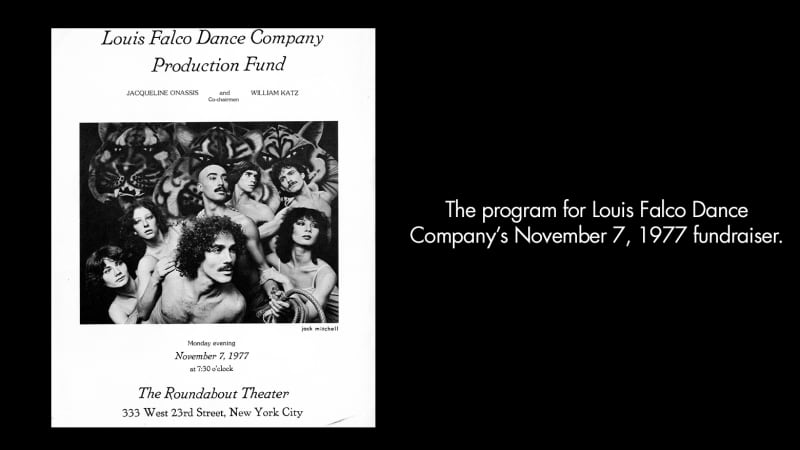
A light-skinned shirtless man with curly hair and a mustache is flanked by three female dancers and three male dancers. Behind them, set pieces featuring the faces of three identical tigers. Text above reads, “Louis Falco Dance Company Production Fun
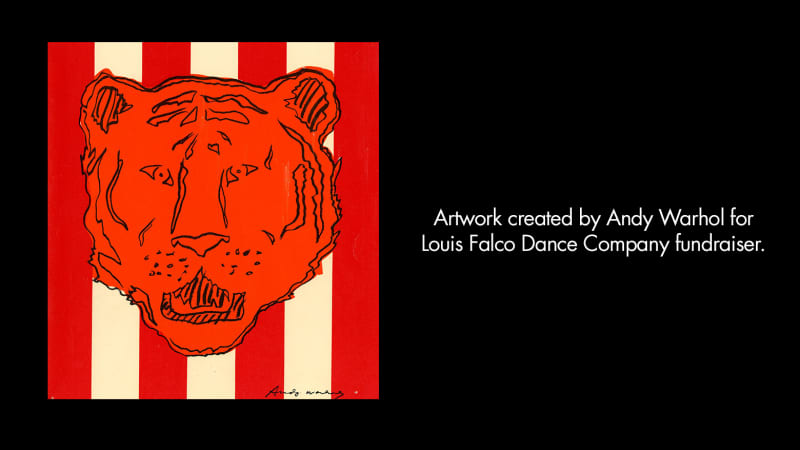
The head of a tiger drawn in black lines on an orange-red surface. The background is red and white horizontal stripes.
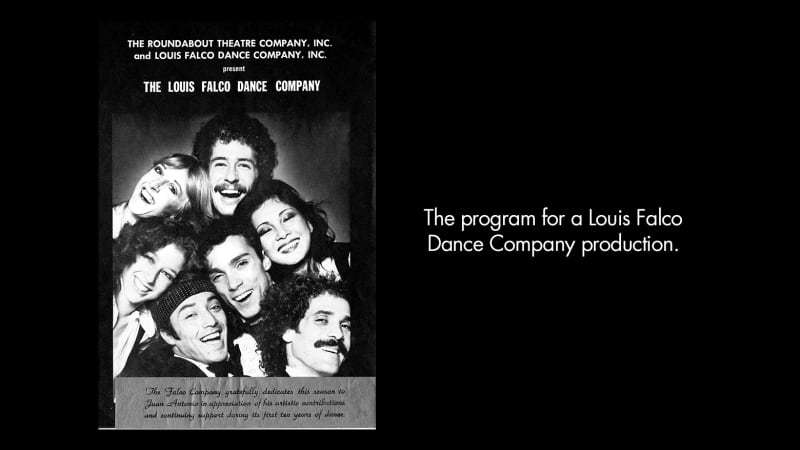
Seven light-skinned adults lean their heads together. Above, text reads, “The Roundabout Theatre Company, Inc. and Louis Falco Dance Company, Inc. present the Louis Falco Dance Company.”
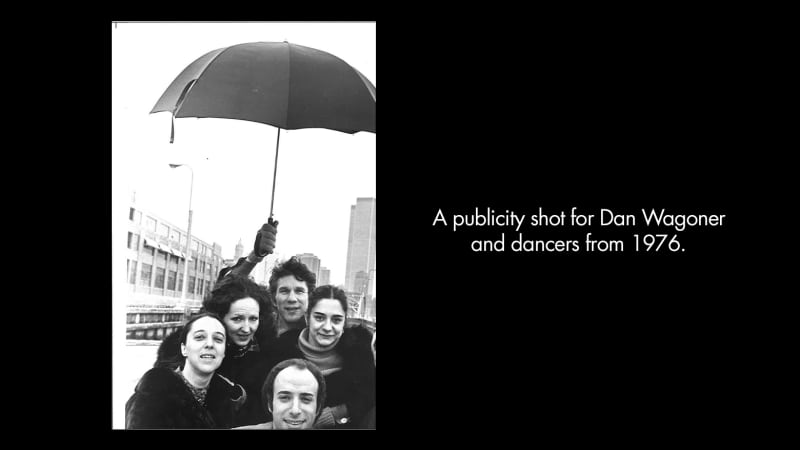
Five light-skinned adults stand under an umbrella held by a man at the back. They stand on a city rooftop.
Many of the most revered modern dance companies of the time danced on our stage: Merce Cunningham, Meredith Monk and House, Jose Limon, Louis Falco Dance Company, Lar Lubovich, Dan Wagoner and countless others. Louis Falco staged a fantastical street-fair/carnival for his production-fund fundraiser event that took place on the street in front of Roundabout’s theatre, with a program cover designed by Andy Warhol (Gene Feist and Andy Warhol attended Carnegie Mellon University at the same time and were casual acquaintances), and incredible sculptural costumes by Marisol (Marisol Escobar).
Thankfully, video survives of select dance programming at RTC and can be found at New York Public Library through TOFT (an example here of Dan Wagoner's "Summer Rambo" from 1976) and numerous references to the Dance Umbrella (and by extension, Roundabout’s connection to the works) can be found in articles, reviews and within the individual archives of the companies who performed with us (Merce Cunningham, Meredith Monk, Louis Falco, etc.) and through accessing TAG records at NYPL.
At a time when performing arts companies are thinking bold and forward-facing, it is important to stop for a moment to look back to understand the history of theatre and dance in New York City and to know where and when overlaps occurred. While it seems unlikely that Roundabout will include dance programming in the near future, it’s exciting to know that it is a part of our rich legacy and to relish the company’s willingness to experiment and adapt, to remain relevant and innovative.


